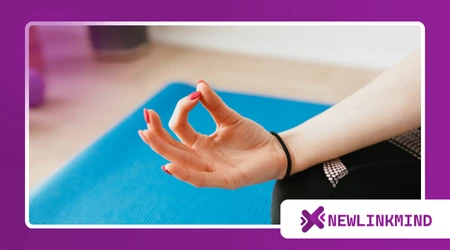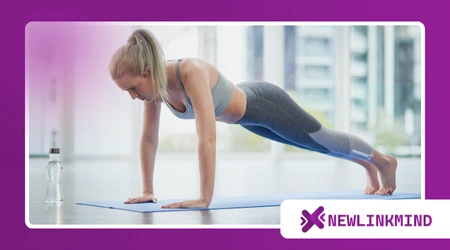From Couch to Mat: Starting Yoga When You’re Not Active

Starting Yoga When You’re Not Active. It’s a common scenario: the desire for change clashes with a habit of inactivity.
Anúncios
For those whose routine involves more time on the sofa than on their feet, the idea of Starting Yoga When You’re Not Active can feel like climbing a mountain.
Yet, this ancient practice is one of the most accessible and effective gateways to a more vibrant life, regardless of your current fitness level.
This journey isn’t about immediate headstands; it’s about micro-commitments and discovering movement.
Why Does Yoga Appeal to the Sedentary?
Yoga offers a unique blend of physical, mental, and spiritual benefits. It focuses on gentle stretching and mindful breathing, minimizing the risk of injury.
Anúncios
Unlike high-intensity workouts, yoga meets you exactly where you are today. The practice cultivates body awareness, a crucial element for anyone beginning an exercise routine.
Is My Lack of Flexibility a Barrier to Starting Yoga When You’re Not Active?
Absolutely not. Flexibility is a result of yoga, not a prerequisite for beginning. Many people who are inactive believe they are “too stiff” for yoga.
This perspective is a complete misunderstanding of the practice’s purpose. The tightest muscles often benefit the most from gentle, sustained poses.
Anúncios
How Can I Make the Transition from Inactive to Active?
The shift from being sedentary to practicing yoga requires a mental, not physical, overhaul first. Think of your body like a vintage car that hasn’t run in years.
You wouldn’t floor the gas pedal instantly; you’d gently check the oil and ease the engine back to life. Similarly, start with extremely short, foundational sessions.
What Does a Beginner’s Schedule Look Like?
Consistency trumps duration when beginning. Try committing to just 10 minutes, three times a week, focusing solely on breath and basic movements.
Read more: How to Overcome the “I’m Not Flexible” Mindset at Home
Use online resources that specifically target absolute beginners and chair-based practices. This approach builds a sustainable habit without overwhelming your system.
Can Yoga Help with the Mental Block of Inactivity?
Inactivity is often rooted in procrastination and a fear of discomfort. Yoga’s emphasis on the present moment, or mindfulness, directly counters this.
By focusing on the sensation of the stretch and the rhythm of the breath, the mental chatter fades.
This practice provides a sense of control and calm, easing the anxiety often associated with starting new habits.

Which Poses Are Best for the Non-Active Starter?
The best poses are those that can be modified extensively. Mountain Pose (Tadasana), often overlooked, teaches proper standing posture and grounding.
See how interesting: Yoga with Pets
Cat-Cow Pose gently warms the spine. Child’s Pose (Balasana) is an essential resting posture that also promotes relaxation.
| Beginner Yoga Poses and Modifications | Benefit for the Inactive |
| Mountain Pose (Tadasana) | Teaches foundational alignment and balance. |
| Cat-Cow Pose | Gently mobilizes the spine and coordinates breath. |
| Seated Forward Fold (Paschimottanasana) | Stretches the hamstrings and lower back, can be done with a pillow under the knees. |
| Supported Bridge Pose (Setu Bandhasana) | Opens the chest and is restorative, can use a block under the sacrum. |
How Do I Prevent Soreness When I’m Unused to Movement?
Soreness is the body’s natural response to new activity. The key is to distinguish between muscle fatigue and pain.
Stay hydrated and listen to your body, never pushing to the point of sharp or shooting pain.
Focus on pranayama (breathing exercises) on rest days to maintain the habit without physical strain.
What is the Most Important Factor for Sustained Practice?
Self-compassion. The yoga mat is not a judgment zone; it’s a sanctuary. There will be days when the 10-minute session feels impossible.
Acknowledge the effort, not the outcome. This non-judgmental approach is what transforms a temporary experiment into a lifelong practice.
How to start gently? Starting Yoga When You’re Not Active
Imagine a person named Alex who hasn’t exercised seriously in five years, spending their days at a desk.
Alex decides to begin by simply doing three minutes of deep belly breathing while sitting in their office chair, followed by three minutes of gentle neck and shoulder rolls.
Check this out: Meditation for Seniors with Hearing Impairment
After a week, Alex attempts a 15-minute restorative yoga video online. This incremental, non-intimidating approach allows Alex’s body and mind to adapt without shock.

Why is Breathing the Cornerstone of Starting Yoga When You’re Not Active?
The breath, or prana, is the most immediate link between the mind and the body. Inactive individuals often have shallow, upper-chest breathing, which exacerbates stress.
Focusing on long, deep, even breaths during yoga calms the nervous system, enabling deeper stretches and reducing the feeling of strain.
According to a 2018 study published in the International Journal of Behavioral Nutrition and Physical Activity, adults who participate in regular moderate physical activity, like yoga, report significantly lower levels of perceived stress and better emotional regulation compared to inactive adults.
This confirms that the mental benefits are as profound as the physical ones.
How Does This Journey Resemble Something Familiar?
Starting Yoga When You’re Not Active is much like learning a new language. You begin with fundamental vocabulary (basic poses) and simple grammar (breath synchronization).
You won’t be fluent overnight, but consistent, gentle practice allows the “language” of movement to become second nature.
You are training the body’s muscle memory and the mind’s focus simultaneously.
Seek certified teachers or reputable online platforms that emphasize alignment and modifications. Avoid advanced classes until you have built a strong foundation.
Look for terms like “Gentle,” “Restorative,” or “Hatha Basics.” Consistency with one or two instructors at first is highly beneficial.
Is It Truly Possible to Transform My Life from the Sofa?
Yes. The journey of a thousand miles begins with a single step. Or in this case, a single stretch.
The decision to embrace Starting Yoga When You’re Not Active is the most difficult part.
The practice itself will reward you with surprising strength, flexibility, and a profound sense of inner peace. Don’t you deserve to feel better, stronger, and more resilient?
Remember, the goal is not perfection; the goal is presence. Showing up on the mat is the victory.
Give yourself the grace and time required to build a new relationship with your body. Embrace this accessible path to a more active and mindful life.
Frequently Asked Questions
Do I need special equipment to start yoga at home?
No. While a yoga mat provides cushioning, you can start with a towel or carpeted floor. Comfortable clothing that allows movement is the only true necessity.
How quickly will I see results when Starting Yoga When You’re Not Active?
You may feel mental benefits, like reduced stress and better sleep, within the first week.
Physical changes, such as increased flexibility and strength, become noticeable over 4 to 6 weeks of consistent practice.
Can yoga help me lose weight?
While weight loss is not the primary goal of yoga, consistent practice contributes to increased muscle mass, better metabolism, reduced stress-related eating, and improved overall activity levels, which can certainly support healthy weight management.
Is it safe to do yoga if I have chronic pain?
It is crucial to consult your doctor before starting any new exercise if you have chronic pain or injuries.
A certified, experienced yoga therapist can offer tailored modifications to ensure safety and therapeutic benefit.
